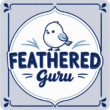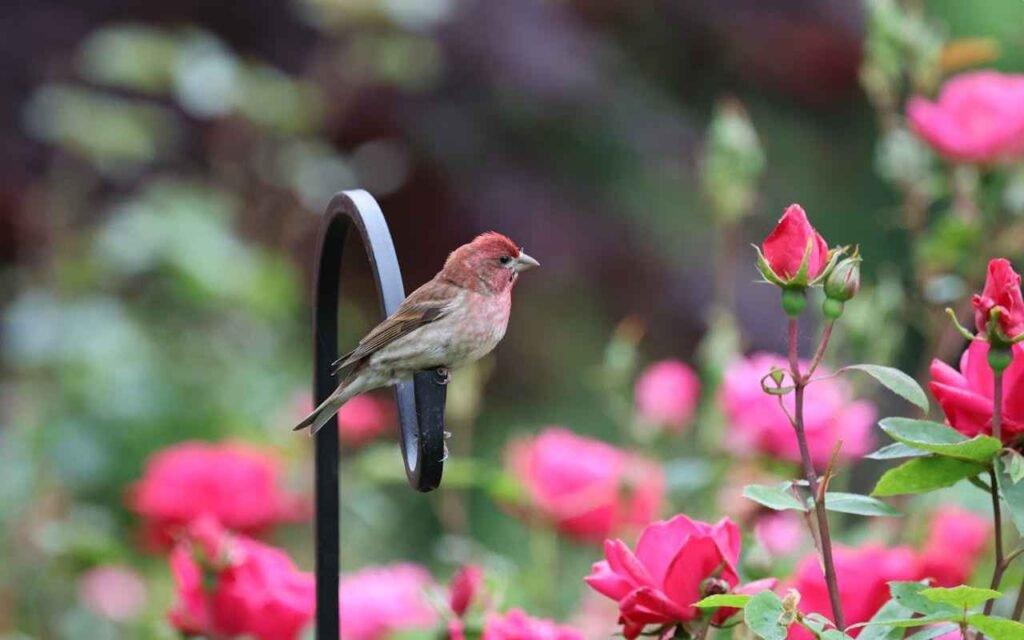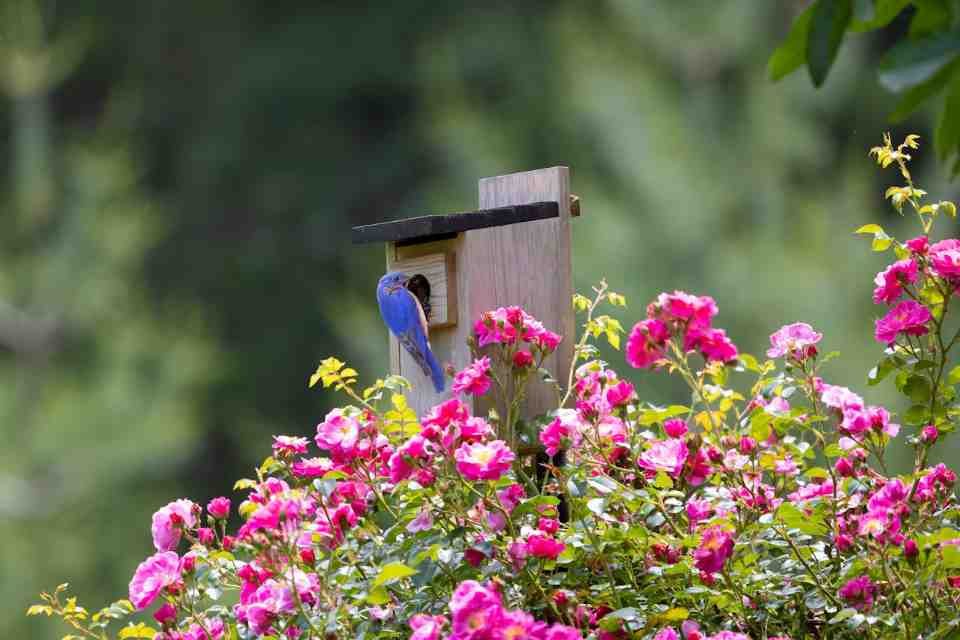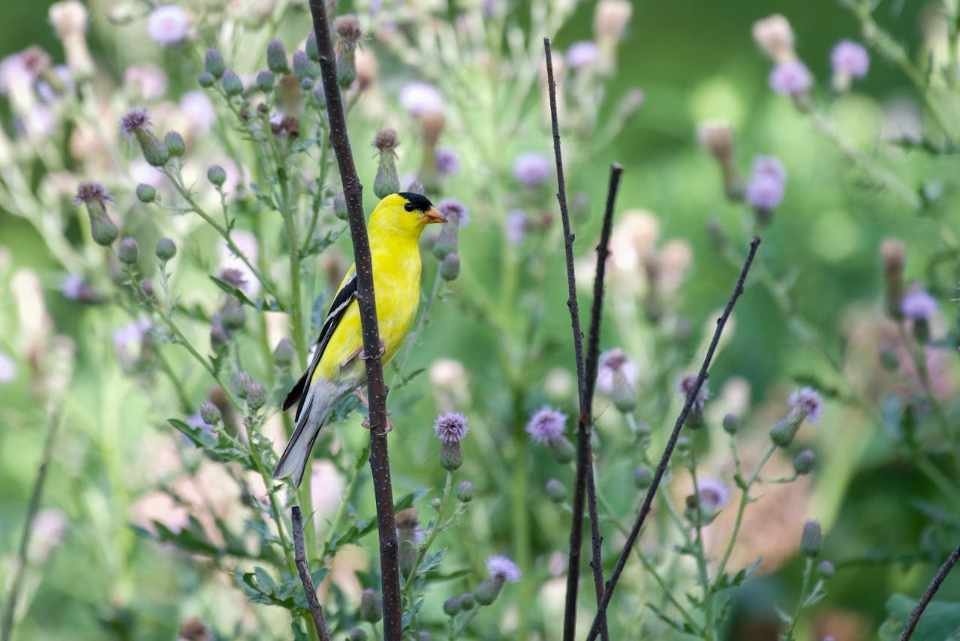If you’re looking to attract more wildlife, using native plants for birds is hands down the best way to turn your backyard into a bird magnet. Not just any birds, but the kind that bring life and color, the little guys that sing you out of bed and make you forget about your morning coffee for a second (almost). 😊
I’ve been there: staring at a dull patch of grass, wondering why no birds hang out, despite my sad bird feeder attempts. Then I switched to planting native flowers and shrubs, and bam! The bird party started. This article will walk you through how to attract backyard birds with native plants that actually work, using tips and tricks I picked up through trial, error, and a lot of watching birds act goofy.
Ready to make your yard the hottest bird hangout in the neighborhood? Let’s get into it.
Why Native Plants Are the Bird’s Best Buds
Before we get into specifics, you might wonder why native plants? Why not just plant whatever looks pretty?
Native plants have co-evolved with local birds. This means they provide exactly what birds need for food, shelter, and nesting. Other plants might look nice, but they rarely offer the right kind of berries, seeds, or insects that native birds depend on.
Plus, native plants tend to be hardier in your climate, so they require less care, good news for people like me who forget to water half the time.
Bottom line: planting native species creates a sustainable, bird-friendly ecosystem right outside your window.
1. Pick the Right Native Plants for Your Area
You can’t just toss any plant into your yard and hope birds will show up. You need the right species that thrive in your local environment.
How to Find Your Local Native Plants
- Check out your state or province’s native plant society website (FYI, these are goldmines).
- Visit local nurseries and ask specifically for native plants.
- Use apps or online tools like the National Audubon Society’s Native Plant Finder (super helpful).
Some Bird-Attracting Native Plants to Consider
Here are a few all-stars to get you started, but remember, it depends on where you live:
- Flowering Shrubs: Serviceberry, Spicebush, and Red-osier Dogwood. They provide berries and shelter.
- Trees: Oaks, Maples, and Birches are great for insects and nesting sites.
- Perennials and Wildflowers: Coneflowers, Black-eyed Susans, and Milkweed support pollinators, which in turn attract insect-eating birds.
Native oak trees support over 500 species of caterpillars and insects, making them a crucial food source for baby birds during nesting season. This was highlighted by ecologist Doug Tallamy, who calls oaks a ‘keystone’ species in North American ecosystems.
Native Plants to Attract Birds: A Quick Reference Table:
| Plant Type | Example Native Plants | Birds Attracted | Best Season to Plant / Attract Birds |
|---|---|---|---|
| Flowering Shrubs | Serviceberry, Spicebush, Dogwood | Cardinals, Bluebirds, Thrushes | Spring through Fall (berries and shelter) |
| Trees | Oak, Maple, Birch | Woodpeckers, Chickadees, Warblers | Year-round (insects and nesting sites) |
| Perennials/Wildflowers | Coneflower, Black-eyed Susan, Milkweed | Hummingbirds, Warblers, Finches | Summer (nectar and insects) |
| Evergreens | Juniper, Pine, Cedar | Sparrows, Wrens, Winter Finches | Winter (shelter and berries) |
| Berry-Producing Shrubs | Sumac, Viburnum, Holly | Robins, Thrushes, Mockingbirds | Fall and Winter (food supply) |
Pro tip: Plant a mix of trees, shrubs, and flowers to create layers of habitat. Birds love variety.
2. Provide Year-Round Food with Native Plants
Birds don’t just drop by for snacks in the summer, they need food year-round, especially in colder months when the bird feeder runs dry.
Native plants offer natural, seasonal food sources that birds recognize and depend on.
What to Plant for Year-Round Appeal
- Spring: Early bloomers like Redbud and Serviceberry offer nectar and early insects.
- Summer: Coneflowers and Sunflowers attract seeds and insects.
- Fall: Sumac and Viburnum produce berries that last into winter.
- Winter: Evergreens like Juniper provide shelter and some berries.
Why Not Rely Only on Feeders?
Sure, feeders are easy, but they don’t replace the complex diet birds get from native plants. Plus, feeders can attract pests and disease if not maintained properly. Native plants provide healthier, diverse food options.
Milkweed is the only plant where monarch butterflies lay their eggs and supports many pollinators, which in turn attract insect-eating birds.
3. Create Shelter and Nesting Spots with Native Plants
Birds need more than food. They need a safe place to hide from predators, bad weather, and nosy neighbors (you know who you are).
What Makes Good Bird Shelter?
- Dense shrubs and evergreens where birds can hide and roost.
- Trees with branches spaced for nests.
- Dead trees or snags for woodpeckers and cavity nesters.
Native Plants That Double as Birdhouses
- Holly bushes: Thick, spiky leaves deter predators.
- Dogwoods: Provide both berries and dense cover.
- Pines and Cedars: Offer year-round shelter.
I once planted a patch of dense dogwood, and within a season, it was a favorite hangout for cardinals and sparrows. It felt like I’d just set up a bird Airbnb with no effort.
Serviceberry shrubs produce berries that feed over 50 species of birds, including robins, thrushes, and bluebirds. These berries are especially important for migrating birds.
4. Water Sources That Complement Your Plants
You might think, “Hey, birds don’t need me to water plants, they need water themselves.” True. But pairing native plants with water features is a game changer.
How Native Plants Help with Water Access
- Native plants can hold moisture and help create natural pools or moist soil spots.
- They attract insects which often gather near water, creating an easy meal for birds.
Simple Bird-Friendly Water Ideas
- A shallow birdbath near flowering shrubs or trees.
- A small pond or water garden with native aquatic plants.
- Even a dripping faucet or mister can make a bird’s day.
Evergreens like junipers and cedars offer essential winter shelter and produce berries that birds rely on during cold months when food is scarce.
Remember: Keep water clean and fresh to avoid attracting mosquitoes or other unwanted pests.
5. Avoid Chemicals and Pesticides That Harm Birds
I get it, gardens attract pests, and it’s tempting to reach for quick fixes. But many chemical pesticides and herbicides can kill the very insects birds rely on for food, and some can even poison the birds directly. Here’s how to protect your garden and your feathered friends safely:
How to Keep Your Bird Haven Safe
- Skip chemical pesticides and herbicides whenever possible. Many common garden chemicals persist in the soil and can harm beneficial insects and pollinators over time.
- Choose organic pest control options. Neem oil, insecticidal soap, and diatomaceous earth are gentler alternatives that target pests without toxic side effects.
- Encourage natural predators. Ladybugs, lacewings, spiders, and predatory beetles feed on garden pests. Planting a variety of native flowers can attract and support these helpful insects.
- Practice integrated pest management (IPM). Instead of spraying preventatively, monitor your plants regularly. If pest populations reach harmful levels, target treatment narrowly and only where needed.
- Plant a diverse mix of native species. Diverse plantings reduce the chance of disease or pest outbreaks and support a balanced ecosystem that keeps pests in check naturally.
- Avoid overuse of treatments. Over-spraying can stress plants and kill beneficial insects, making pest problems worse in the long run. Sometimes, letting nature take its course is the best approach.
Why It Matters
Those native flowers and plants you’re growing aren’t just pretty, they attract pollinators and insects that are essential food sources for insect-eating birds like warblers, chickadees, and bluebirds, especially during breeding season. Keeping your garden chemical-free helps maintain this delicate balance and keeps your bird visitors healthy.
These native flowers attract many pollinators and insects, which are a primary food source for insect-eating birds such as warblers and chickadees during breeding season.
6. Maintain Your Native Plant Habitat
You can’t just plant and forget, though I wish that were true.
Basic Maintenance Tips
- Prune shrubs and trees to keep them healthy but don’t overdo it.
- Leave some leaf litter and dead branches, they’re great for insects and cover.
- Water new plants regularly until established.
- Remove invasive species that try to sneak in.
Keeping a little wildness in your yard helps birds feel comfortable. My neighbors’ perfectly manicured lawns? Not a single bird stays longer than a minute. My slightly messy patch? The bird party is all night long.
Viburnum shrubs produce berries that last into late fall, providing food for birds preparing for migration or the winter months.
7. Combine Native Plants with Other Bird-Friendly Practices
Native plants are the foundation, but you can boost your bird magnet powers by adding a few extras.
Bonus Bird Magnet Tips
- Hang suet feeders or seed feeders alongside native plants.
- Install birdhouses designed for local species.
- Provide safe perching spots like dead branches or low fences.
- Avoid reflective windows or place decals to prevent bird collisions.
Think of it like throwing a party. The plants are your venue, but the feeders and houses are the music and snacks that keep guests around longer.
Many non-native plants produce fruit or seeds that birds don’t recognize or can’t digest, which can create dangerous food gaps during critical seasons. Native plants have evolved alongside local birds to fill their needs throughout the year.
Quick Recap: How to Attract Backyard Birds with Native Plants
- Choose native plants suited for your region.
- Offer food sources throughout the year.
- Provide shelter and nesting spots.
- Add fresh water near your plantings.
- Avoid chemicals that harm birds and their food.
- Maintain your yard with a light touch.
- Use feeders and birdhouses as extras.
Frequently Asked Questions (FAQs)
Q: What exactly are native plants?
A: Native plants are species that naturally grow in your specific region without human intervention. They’ve adapted over time to local climate, soil, and wildlife, making them ideal for supporting native birds and other animals.
Q: How do I find native plants suitable for my backyard?
A: Start by checking your local native plant society’s website, visiting nearby nurseries with a native plant section, or using tools like the National Audubon Society’s Native Plant Finder. These resources list plants that thrive in your area and attract local birds.
Q: Can non-native plants attract birds too?
A: Some non-native plants do attract birds, but native plants generally provide better food, shelter, and nesting resources since local birds evolved alongside them. Non-native plants may not support the insects birds eat or produce the right berries and seeds.
Q: How much maintenance do native plants need?
A: Native plants typically require less care than non-native varieties once established. They are adapted to your local environment, so they need less watering, fertilizer, and pest control. That said, some pruning and seasonal upkeep help keep them healthy and attractive to birds.
Q: Is it safe to use pesticides if I want birds in my yard?
A: It’s best to avoid chemical pesticides and herbicides because they can harm the insects birds feed on and even poison the birds themselves. Organic pest control methods and encouraging natural predators are safer options.
Q: How can I attract birds during the winter months?
A: Plant native species that provide food and shelter year-round, like evergreens (Juniper, Pine) and berry-producing shrubs (Sumac, Viburnum). Adding a clean water source like a heated birdbath can also help birds survive colder months.
Final Thoughts
If you’ve stuck with me this far, you’re probably ready to get your hands dirty, and by dirty, I mean planting stuff, not just scrolling through Pinterest bird photos all day (though I do that too).
Bringing birds into your backyard isn’t just about making things look pretty. It’s about creating a little slice of nature that feeds the soul and adds life to your daily routine. Plus, watching birds can be way more entertaining than reality TV, and they don’t argue back.
So grab some native plants, get planting, and enjoy your soon-to-be buzzing backyard. Birds are smart, they know a good thing when they see it, and with native plants, you’re basically rolling out the red carpet for them.
Need help picking the perfect plants? Start local, keep it natural, and have fun. Birds are waiting. 🙂




